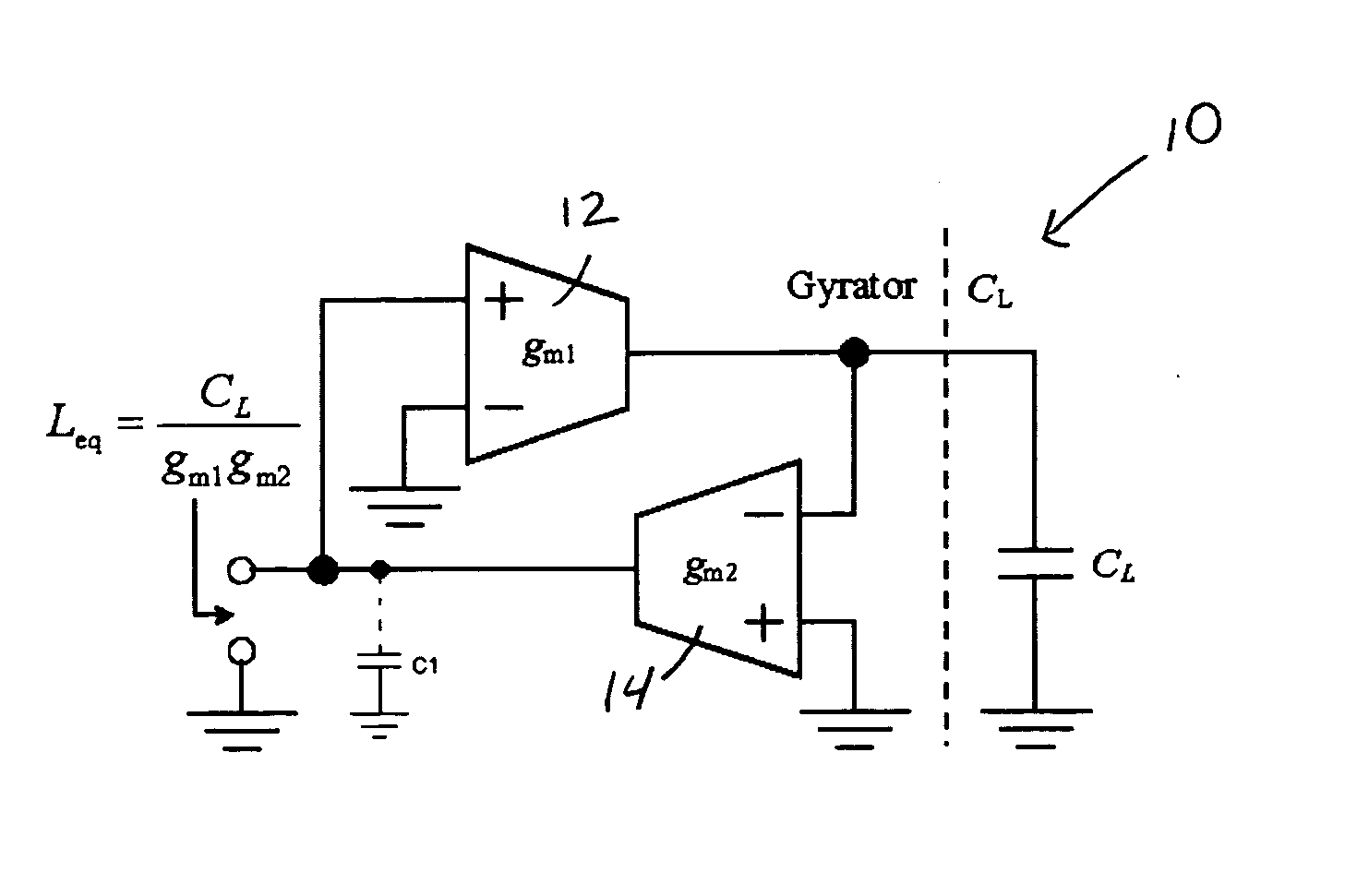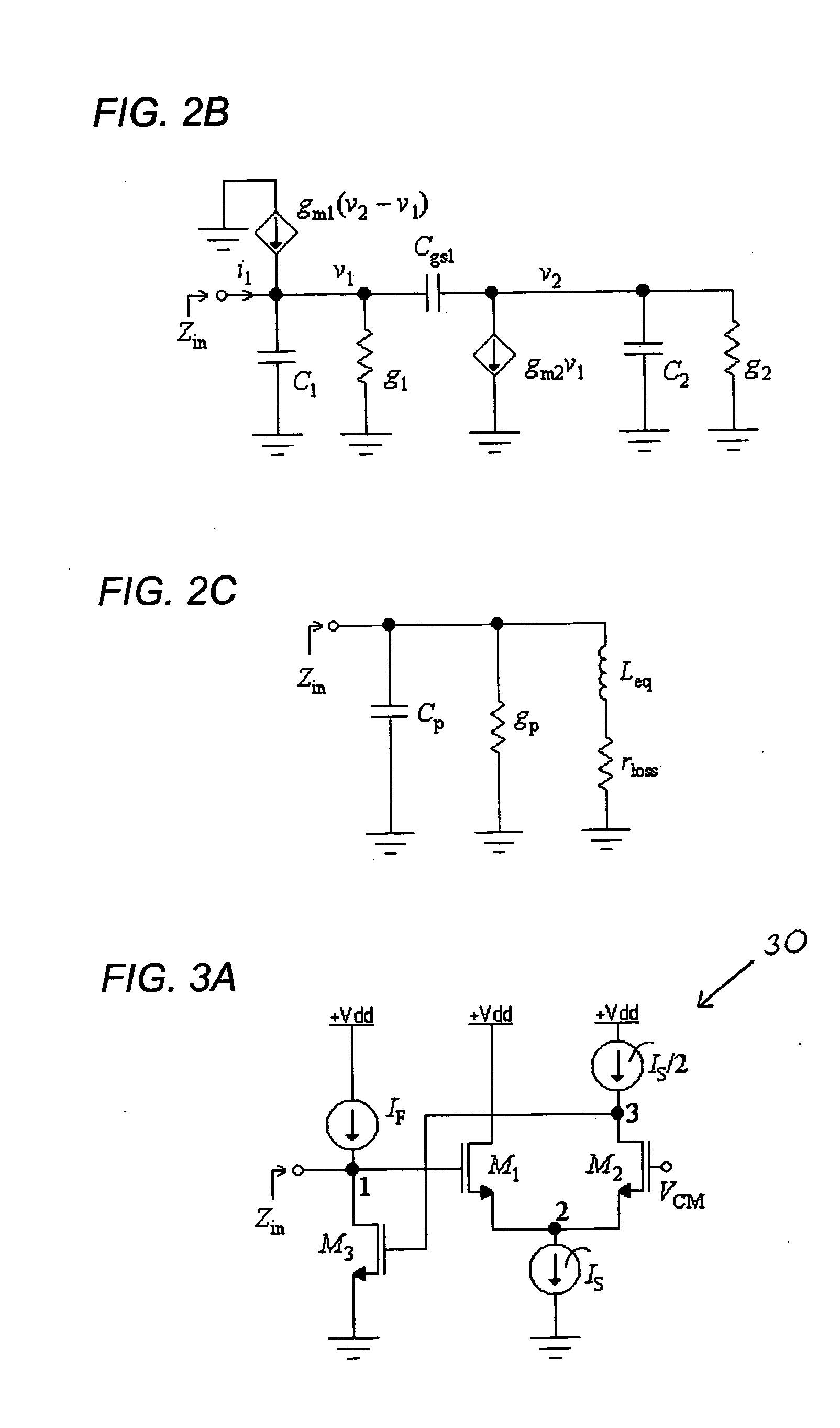High-frequency active inductor
a high-frequency active inductors and high-frequency technology, applied in the field of high-frequency active inductors, can solve the problems of increasing the phase shift of the transconductors, severely reducing the useable frequency range, and the prior methods for constructing cmos active inductors are very limited
- Summary
- Abstract
- Description
- Claims
- Application Information
AI Technical Summary
Benefits of technology
Problems solved by technology
Method used
Image
Examples
Embodiment Construction
[0052] Referring to FIGS. 4A and 4B, a mathematical small-signal analysis is set forth below to demonstrate the performance of active inductor circuit 32. FIG. 4A shows a small-signal equivalent circuit 40 of active inductor circuit 32. A conductance g1 represents the sum of drain-source leakage gds from M3 and MIF, and a conductance g3 represents primarily the drain-source leakage gds of MIS / 2. A capacitor C1≈0.5Cgs1+Cjd3+Cjd,IF+CL, where Cjd,IF represents the drain diffusion capacitance of transistor MIF, and CL represents the load capacitance (including the input capacitance of any subsequent circuitry). A capacitor C3≈Cgs3+Cjd2+Cjd,IS / 2, where Cjd,IS / 2 is the drain-diffusion capacitance of transistor MIS / 2. A transconductor Gm2=gm3, the transconductance of transistor M3. A transconductor Gm1 has an internal node, and its small-signal equivalent circuit 42 is represented by FIG. 4B.
[0053] In FIG. 4B, a conductance g2≈gds,IS+gds1, where gds,IS is the gds of transistor MIS. A capa...
PUM
 Login to View More
Login to View More Abstract
Description
Claims
Application Information
 Login to View More
Login to View More - R&D
- Intellectual Property
- Life Sciences
- Materials
- Tech Scout
- Unparalleled Data Quality
- Higher Quality Content
- 60% Fewer Hallucinations
Browse by: Latest US Patents, China's latest patents, Technical Efficacy Thesaurus, Application Domain, Technology Topic, Popular Technical Reports.
© 2025 PatSnap. All rights reserved.Legal|Privacy policy|Modern Slavery Act Transparency Statement|Sitemap|About US| Contact US: help@patsnap.com



